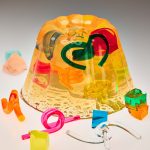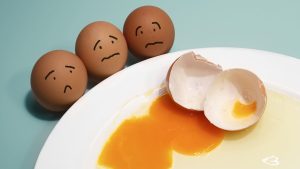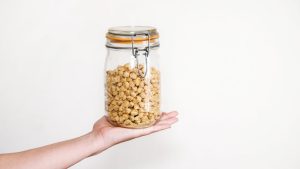
I Doubled My Protein Intake And My Skin Has Never Looked Better
On Instagram, my feed is no longer obsessed with green juice—now it’s shaker bottles and protein powders. In gyms, women swap recipes for protein mug cakes with the same passion once reserved for smoothie bowls. Protein is at its pop-culture peak, and we are hearing about it being blended into coffees, baked into brownies, and dusted over popcorn. It’s slipped out of the bodybuilding aisle and into the realm of beauty content, sitting alongside retinoids and LED masks as something you’re expected to have an opinion on.
For most of my life, protein felt like someone else’s obsession—namely, the men at my local gym. My own beauty upgrades came in glass bottles with droppers, packaged in colors designed to look good on bathroom shelves. Protein was functional, unglamorous, and—in my mind—entirely about muscle mass, limited to my dinner plate. I couldn’t tell you how many grams I had in a day, mostly because I never thought about it.
That changed when I noticed what started as dry spell settling as a permanent fixture over my skin despite my elaborate skincare routine. It wasn’t dryness, exactly in the traditional sense—no flaking, no itch—but an unsettling loss of bounce. My cheeks looked a little deflated, the glow had dulled, and even my most forgiving foundation seemed to collect in places it hadn’t before. I chalked it up to stress, late nights, or maybe the slow inevitability of age, until a nutritionist friend casually asked how much protein I was getting.
The question felt misplaced. But as dermatologist Dr Aditi Sharma explained later, it was the missing link. “Protein is the raw material your skin needs to make collagen, keratin, and elastin. Without enough of it, the skin loses firmness, wounds heal slower and hair can thin. It’s not an instant-glow ingredient, but over time, consistent intake supports resilience and repair.”
Biological processes don’t care for beauty marketing cycles. Nutritionists point out that amino acids—the building blocks of protein—are needed for the enzymes and hormones that drive skin regeneration. They also help regulate blood sugar, which can indirectly keep inflammatory skin conditions in check. In other words, without enough protein, you’re asking your skin to rebuild itself without bricks.
I didn’t overhaul my diet overnight or start buying powders that I couldn’t swallow without triggering my gag reflex. Instead, I began with swaps. Greek yogurt at breakfast. Chickpeas folded into salads. Quinoa subbed in for rice and a fistful of almonds or roasted edamame between calls. Eggs or grilled fish anchoring dinner. The trick, I learned from nutritionist S Madhu, was spacing protein through the day so my body could actually use it, instead of loading it all into one meal.
Madhu recommends 0.8 to 1 gram of protein per kilogram of body weight for most adults, with slightly more for those who are highly active, recovering from illness, or looking to improve skin quality. “Not everyone needs 100 grams of protein a day. It depends on your lifestyle, weight, and sometimes even preexisting health conditions.”
I overshot in my first week, fuelled by equal parts enthusiasm and vanity, and paid for it with a sluggish, bloated few days. Protein without enough fiber can slow digestion, and without enough water, the nitrogen by-product of protein metabolism can leave you feeling tired instead of energised.
It’s been a few months since I’ve upped my intake of protein for skin health, and the shift isn’t a transformation you’d see on a billboard, but it is one I see in the mirror. My skin feels steadier—less prone to mid-cycle flare-ups, less reactive after long days in makeup. I still deal with rosacea flare-ups (thermal spring water and azelaic acid help), but my face no longer has that flat, slightly collapsed look by evening. Even my nails, which used to chip if you looked at them too hard, seem to have joined the programme.
Protein for skin isn’t a miracle ingredient; it is a slow, steady investment. Think of it as tending to the scaffolding that holds everything in place. The results—fewer breakouts from blood sugar swings, a stronger skin barrier, a smoother, more even texture—don’t arrive with the thrills and frills of a new serum launch. They arrive with consistent protein intake, then stay for as long as you keep up the habit. And in a beauty world hooked on quick fixes, that might be its most subversive appeal.
Have a beauty or wellness trend you’re curious about? We want to know! Send Vogue’s senior beauty & wellness editor an email at [email protected].











